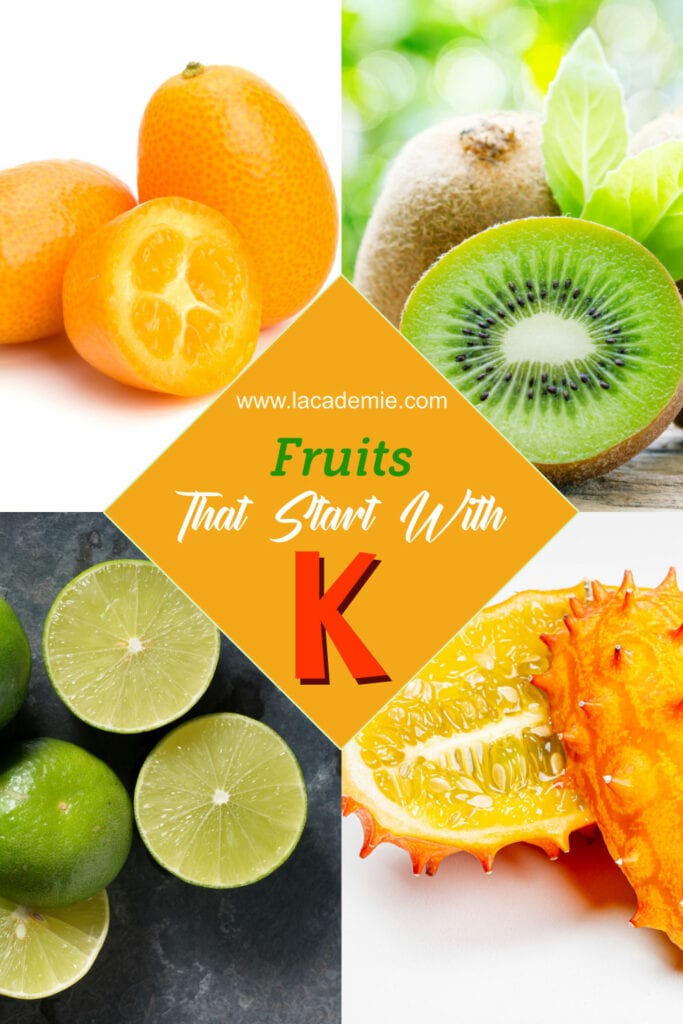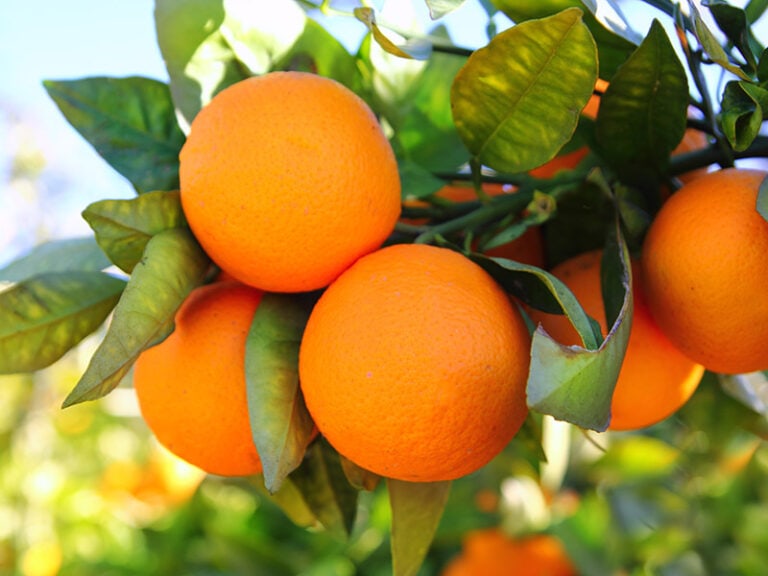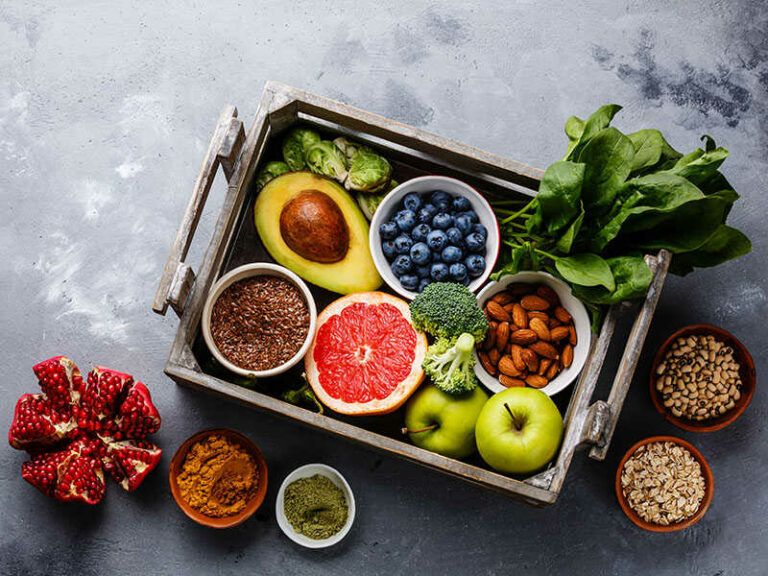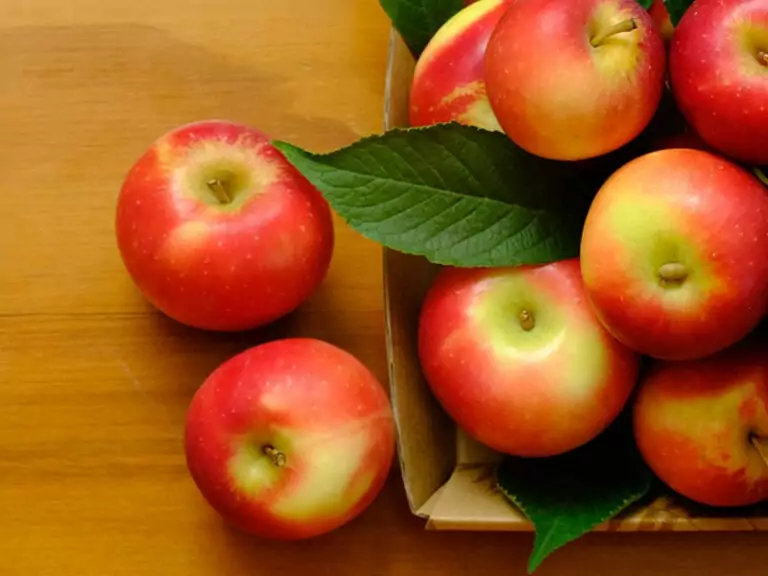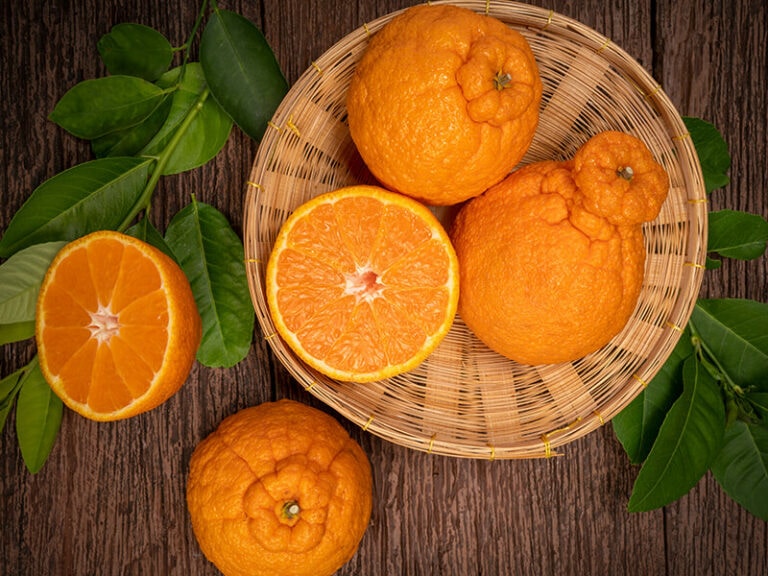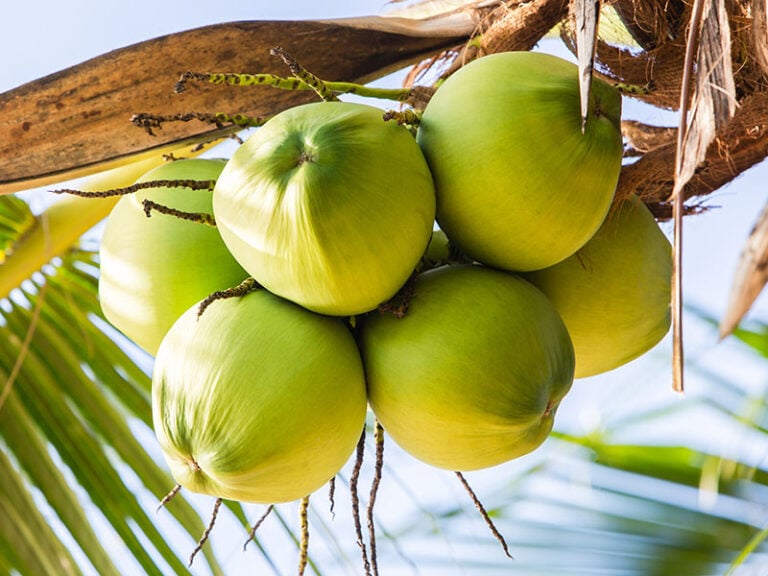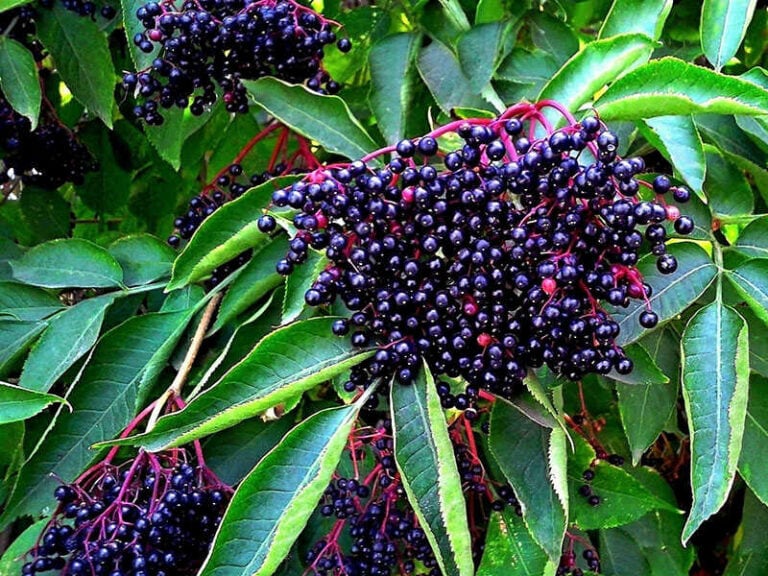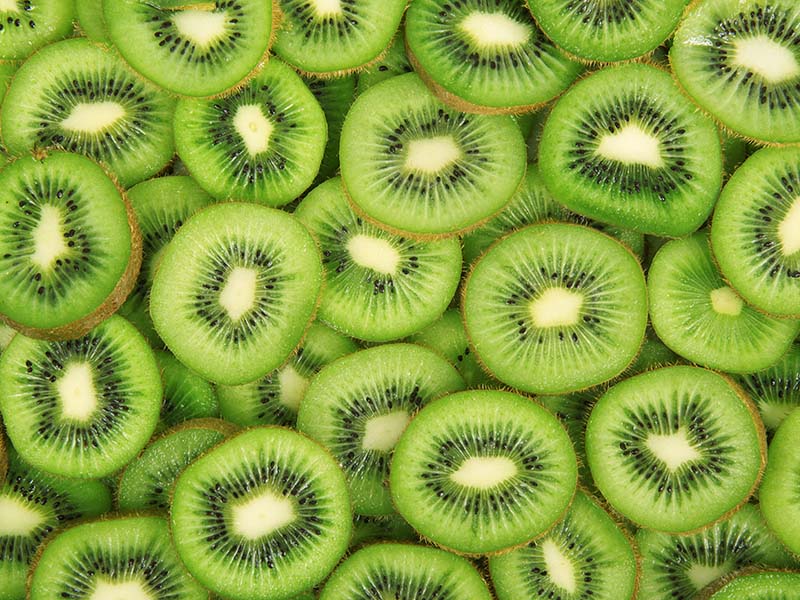
Kiwi is probably one of the fruits that start with K entering your mind first. However, do you know that the list of fruits beginning with the letter K is significantly more dynamic? Keep reading this article because the 22 fruits that start with K are going to blow your mind.
The following lists would help you overcome the challenge of looking for more fruits that start with K. It will provide information about what they are, what they taste like, and why they are worth trying.
And if you are looking to widen your K-fruit choices, please keep reading. The more you read, the more K-fruits you will discover. And I promise this article will not let you down.
Irresistible Brown Fruits That Start With K For You To Taste
Can you name fruits that start with K and become brown when ripe? How many brown K-fruits can you list? Let me help you with the following list to overcome the challenge.
1. Kapok Fruit
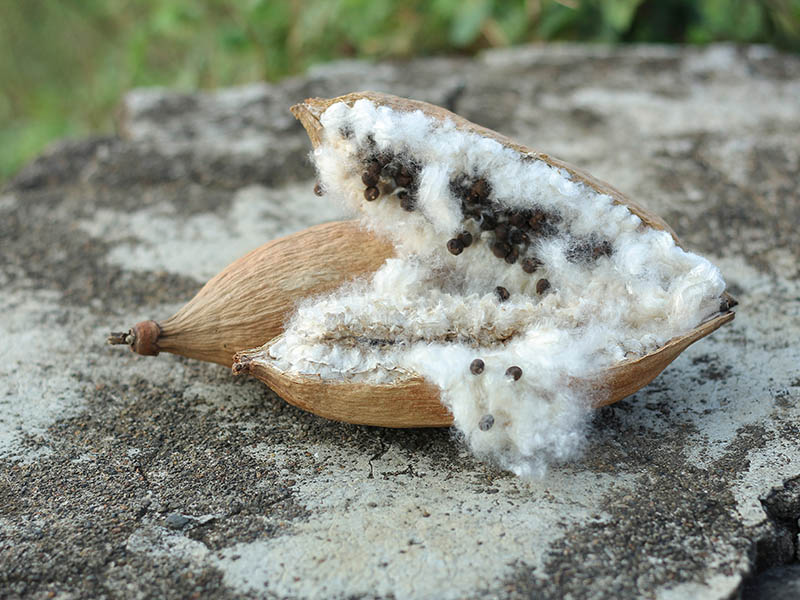
Kapok fruit, named by Malaysians, provides us with cotton or silk cotton in English. Cotton clothes are highly durable and environmentally friendly. Besides fashion benefits, kapok can be eaten as other fruits.
Looking outside this unique K-something food, many people would think the fruit is quite unattractive. It has rough and brown skin when ripe. With 1.5-3 cm long, kapok fibers are attached to the seeds. The oil has a yellow color and a pleasant mild odor and taste resembling cottonseed oil.
Kapoks are also used as stuffing for pillows or mattresses. In the Philippines, people use them to lower fever, control bleeding, and relax spasms. Raw fruit can also provide pain relief, soothe mucous membranes in case of bronchitis, and so on.
2. Kutjera Fruit
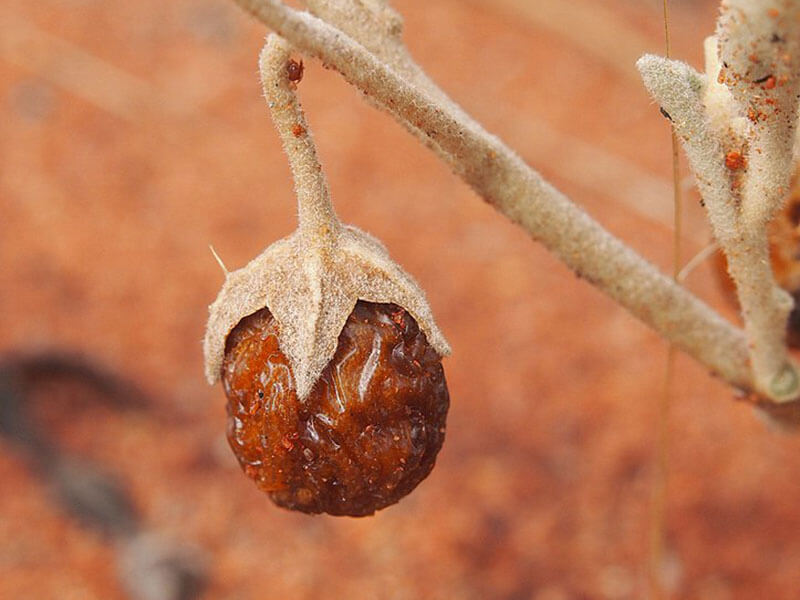
Kutjera is mainly recognized for its brown skin and intense taste.
Kutjera fruit, or the scientific name Solanum Centrale, may sound uncommon in your country. However, the fruits originated in Australia a long time ago.
Kutjera fruit also goes by the name of Australian desert raisin. It is mainly recognized for its brown skin and intense taste of tamarillo and caramel. The fruit is from 1 to 3 in diameter, quite similar to grapes. When kutjera goes ripe, the skin becomes more wrinkled.
Kutjera fruit contains lots of nutrients such as protein and minerals. Therefore, there are a lot of common uses of Kutjera fruit in daily life. You can grind the fruits in a mortar and use it to season your dish, especially meat or curries.
3. Kepel Fruit
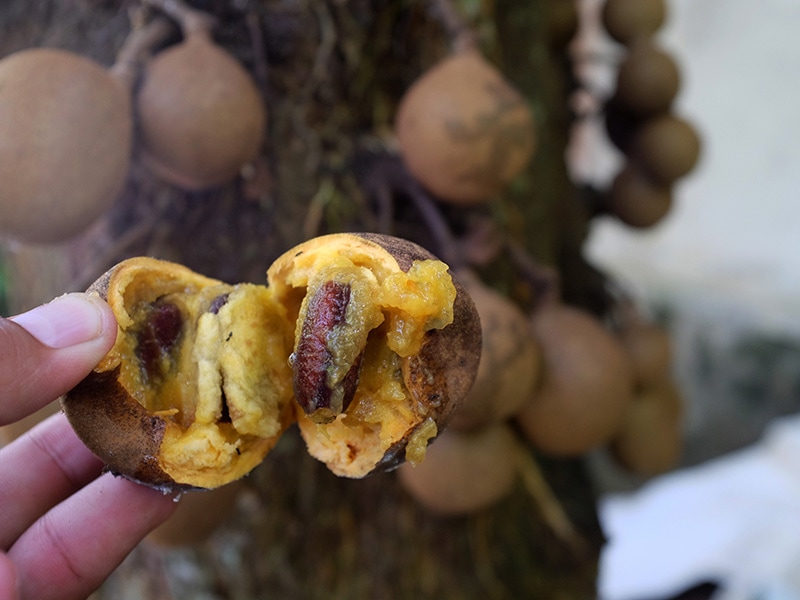
Kepel is named after Henry Kepel, an English captain. He was credited with fighting pirates around Singapore in the 19th century. This rare fruit can be found in Indonesia, namely in the Java region.
Looking at the shape of Kepel fruit, you may mistake it for lychee since it has an oval to round profile and becomes brown when it is fully grown. The fruit is 3 to 6 centimeters in diameter. Unlike lychee, Kepel fruit needs only two months until it is ready to eat.
There are lots of benefits when eating this fruit. First, it is succulent when you enjoy fresh and green Kepel fruits. Secondly, people say that another use of Kepel is to reduce body odor. Thirdly, the fruit contains prebiotics that benefit the body.
4. Kiwi Fruit
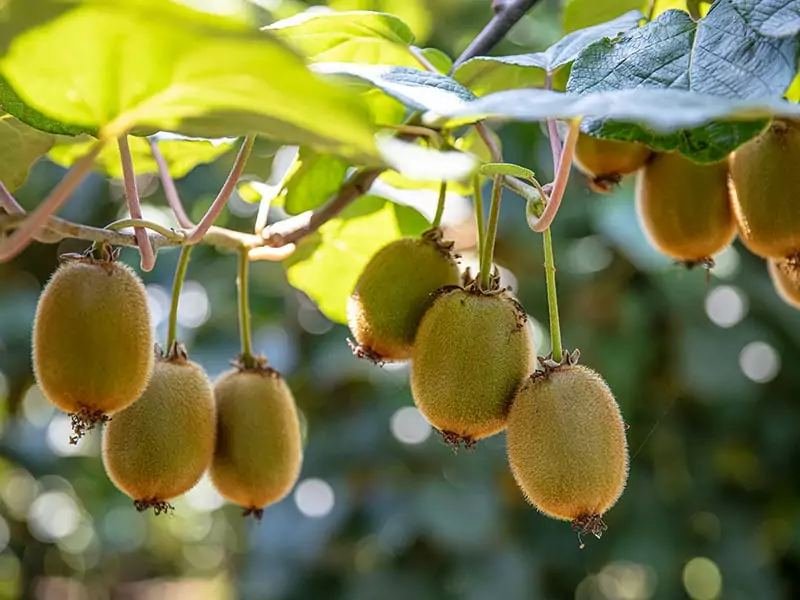
Kiwi is probably one of the most popular fruits that start with K. The first man that grew Kiwi in New Zealand was a farmer named Alexander Allison. Today, it is widely recognized as China’s national fruit. Besides those two countries, the fruit is also grown in France, Australia, etc.
Kiwi has a round to oval shape, and it has 6 to 7 centimeters in diameter. The fruit is pulpy and juicy with black seeds inside. Its taste is somewhat sour and subtly sweet. In comparison with other fruits, kiwi is a combination of strawberries and melons.
Many people may already know the health benefits of eating kiwi. Since the fruit contains lots of minerals and vitamins, eating kiwi fruits improves your immune system. Another health benefit of consuming these fruits is supporting your digestive system, appealing to your taste.
Discover the health benefits of kiwis in this video.
5. Korean Pear
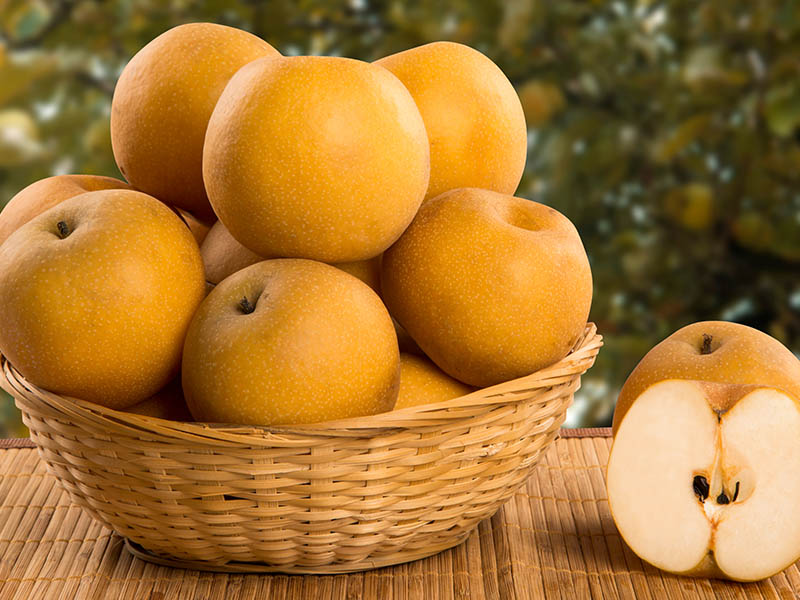
Korean Pears are grown primarily in China, Korea, and Japan, where they have been planted and bred for over 3000 years. They are usually sent as gifts on special occasions. These fruits are harvested from October to December every year.
Korean pear has an attractive appearance. It has a round shape and brown-color smooth skin when it reaches the harvest season. Its taste is subtly sweet and delicious. Each Korean pear weighs around 600 to 800 grams.
The delicious Korean fruit is rich in nutrients, protein, calcium, vitamin C, etc. Eating fruits stimulates white blood cell production, preventing you from getting the flu or cold. Korean pear is beneficial to pregnant women as it fights infections and supports the cardiovascular system.
Healthier Green Fruits Beginning With Letter K
I bet that you can have a long list of green fruits. However, how many green K-fruits can you really name? If the answer is zero, the list below will give you a big hand. Each fruit would give you a new experience. Let’s take a look at them.
6. Key Lime
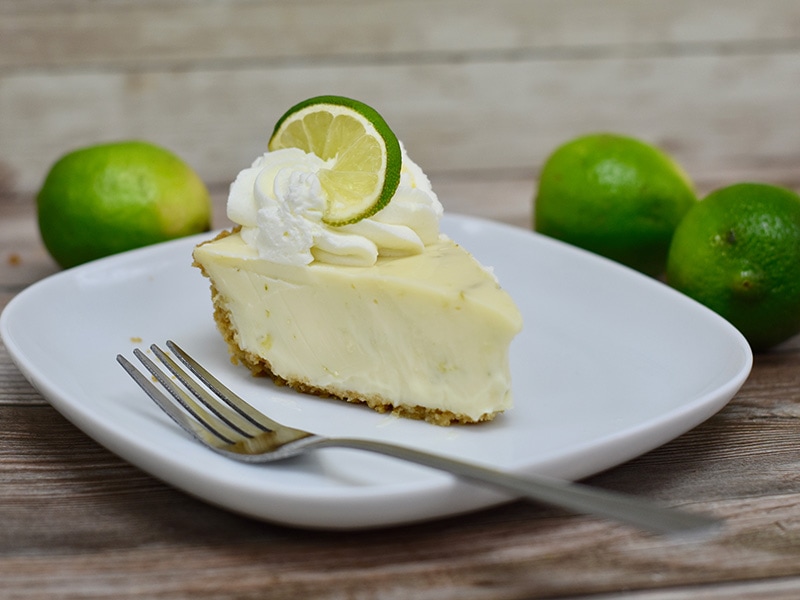
Key lime, or Mexican lime, is known as one of the most famous citrus fruit types. The fruit was brought to America by Spanish settlers. These fruits are widely cultivated in Indonesia, particularly in the region where many Malaysian people live.
Key lime looks pretty similar to its relatives, such as limes. Like limes, the fruit has a spherical shape. Generally, its diameter is around 3 to 6 centimeters. It is most famous for its sharp acidity.
Key lime is popularly used in baking cakes. Since it tastes sour, many people use lime juice to savor the cakes, making them smell good. Another use of crucial lime is to preserve pickles and vegetables.
Learn more about the recipe for making key lime juice.
7. Kaywa
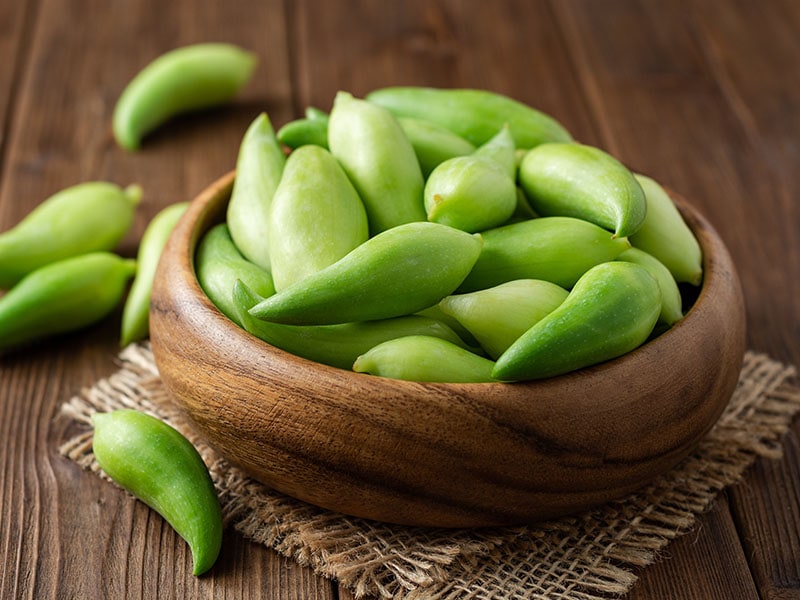
Kaywa, or Caigua, is a herbaceous vine grown for its edible fruit. However, many people believe it to have originated from the Andes, South America. Kaywa is used as a food ingredient. According to historical sources, Peruvians depicted kaywa fruits on their ancient ceramics.
Kaywa has a light green color, somehow appearing as gigantic chilis. The fruit has a curved shape. Its lengths can be up to 15 centimeters. Kaywa has smooth skin and sometimes soft spines. Unlike most fruits, kaywa has unusually-shaped seeds.
Kaywa is a source of potassium, magnesium, and phosphorus. Its everyday application is to cook with rice and meat. When eating kaywa, you should remove its seeds since they have some side effects on your protein absorption.
8. Kantola Fruit
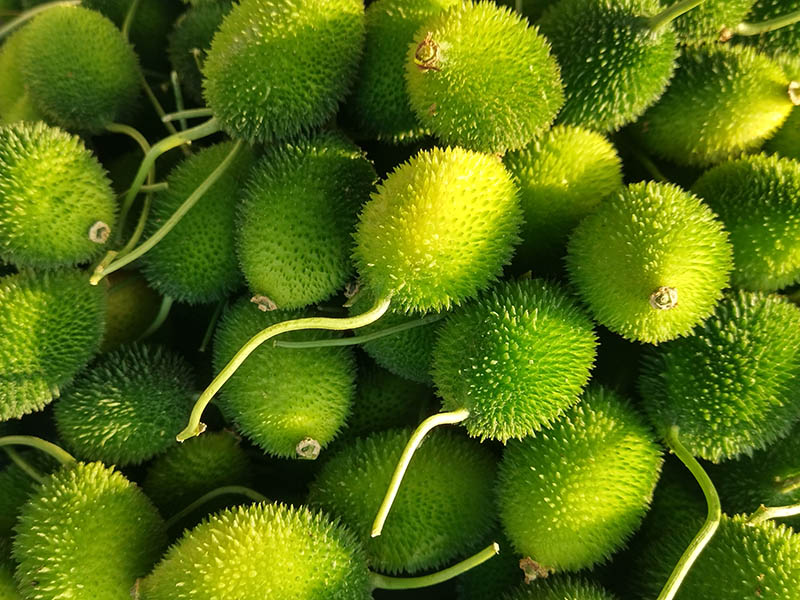
Kantola is used in most countries in South Asia and all regions of India. The fruit is often stuffed with spices or eaten with fish in some parts of the world. Other countries use kantola as vegetables.
Kantola belongs to the bitter gourd family; however, the fruit is not as harsh as its relatives. The fruit’s appearance somehow would remind you of small durians. Its pulp is yellow and red when being removed from the green skin.
There are plenty of nutrients such as protein, fiber, and minerals. Eating kantola is believed to help one maintain weight. To skincare lovers, the fruit does an excellent job of anti-aging. Additionally, it also removes your concerns over skin-related problems.
9. Kaffir Lime Fruit
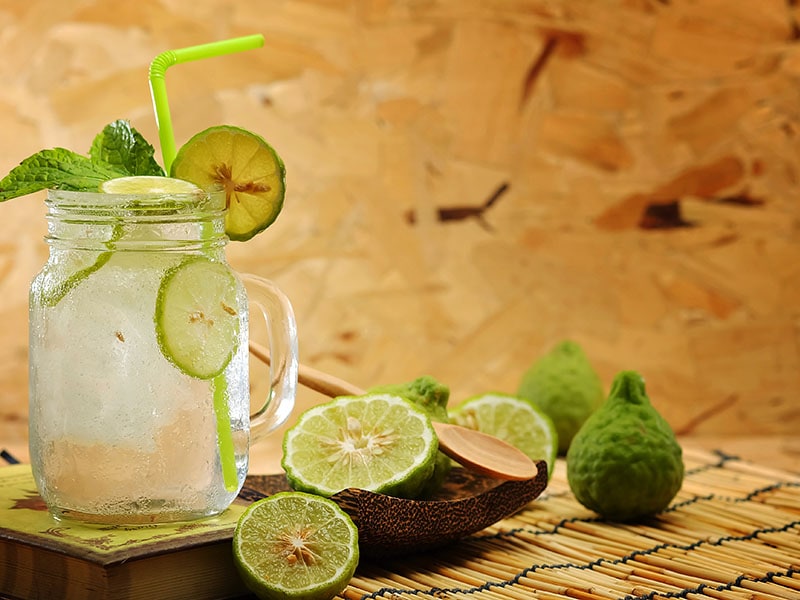
Kaffir lime fruit is a circus fruit native to tropical Southeast Asia and Southern China. Kaffir prefers hot summers and mild and dry winters. Kaffir lime fruit is available in spring with a peak season in fall. The kaffir lime is not commonly used as its leaves.
Kaffir lime is green and round. Kaffir lime peel is loaded with fragrant citrus oil. The fruit is yellow when it ripens. The bump exterior makes the fruit outstanding. Compared to other limes, kaffir is small, only 2 to 4 cm in diameter.
The kaffir lime peel is most used in Thai and Lao curry paste to enhance an aromatic flavor. One of the most important benefits of the fruit is to promote oral health and detoxify the blood. Besides, this lime is an exotic citrus that adds a pleasant flavor to any dish.
Check out the various boons that kaffir lime fruit can give you here.
10. Kabosu Fruit
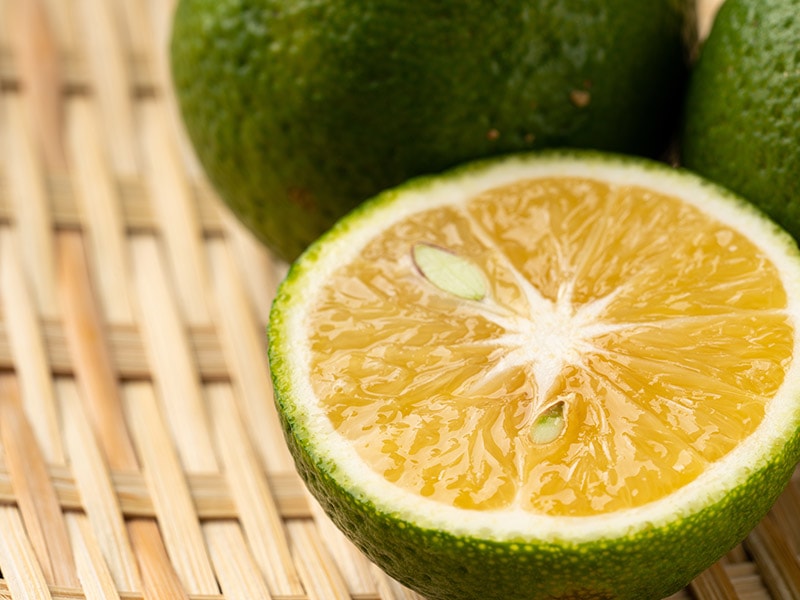
Kabosu originated from Japan and is considered one of the favorite fruits among the Japanese. The fruit is a mixture of bitter-tasting papeda fruit and orange. Most Japanese people enjoy eating newly bought or refrigerated kabous under winter snow.
Observing the outside of kabosu, you may think it is like tangerines. However, kabous have a spherical shape instead of oval shapes. The fruit has a rich sour taste and unique aroma. Unlike small yuzu lemons, the average diameter of kabosu is 5 centimeters.
Kabosu has lots of uses. For example, its juice can be used in cooking rice. Kabosu rice is an ingredient in tangerine sashimi. Besides, the Japanese usually use the fruit as medicine and aromatherapy. Also, girls often bathe in kabosu water because of its vitamin C and unique smell.
11. Knobby Russet Apple
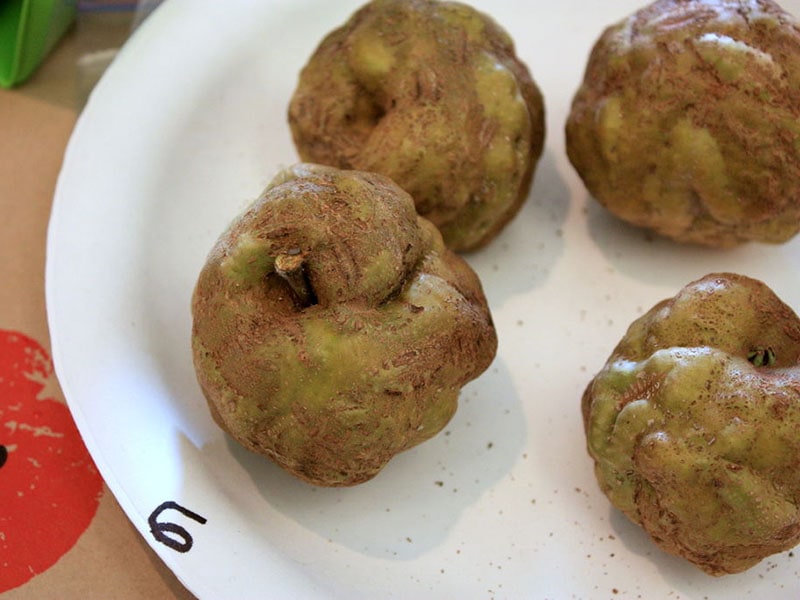
What a strange look Knobby Russet Apple has!
Knobby Russet Apple, or heirloom apples, has a distinctive look that may make one lose interest on the first try. These apples are an old British variety first found in Sussex in the late 1810s. The fruit is considered the ugliest apple because of its unforgettable appearance.
Knobby Russet apple has a brown and usually warty, knobbly surface. It has a greenish-brown appearance and is medium in size. The fruit contains complex but subtle flavors which are balanced and sweet-tart. Besides, the Knobby Russet apple also has creamy flesh.
This distinct apple variety contains a relative amount of calcium, vitamin A and iron. Like other apples, Knobby Russet apples are beneficial to your body.
For example, Knobby Russet apple fruits are a good source for providing vitamin C, boosting your immune system. Also, they help support anti-aging.
What do Knobby Russet apples taste like? Discover here.
Unique Yellow Fruits That Start With The Letter K
How about yellow fruits that begin with K? How many of them have you ever eaten? Stop spending time wondering and be ready to follow the yellow K-fruits I prepare for you. It will not let you down!
12. Kei Apple Fruit
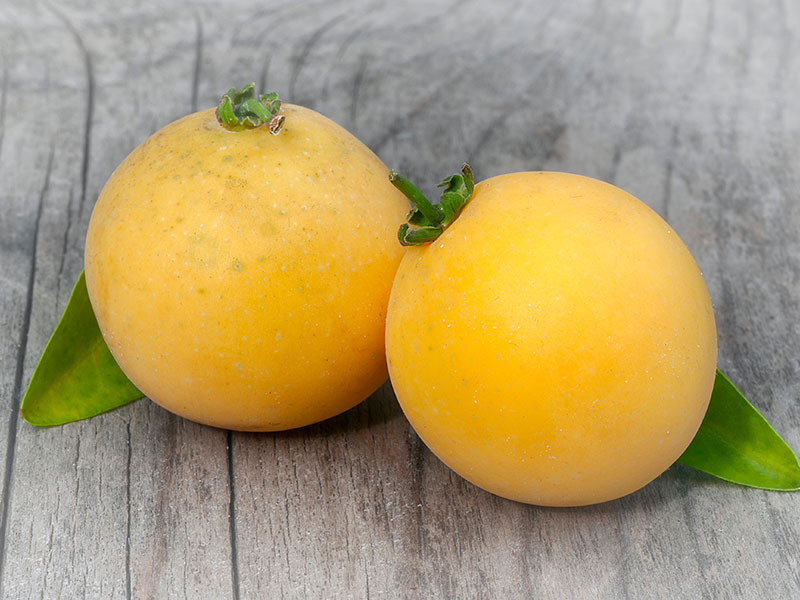
Kei Apple originates from the area around the Kei River, which flows through the Eastern Cave province of South Africa. Mainly, the fruit is cultivated in the Transvaal, a region of South Africa.
The Kei Apple is nearly round in shape and looks like plums in size. The fruit contains yellow berries and tiny seeds. The golden fruit is aromatic. Many people say that it is sweet and similar to apricots in taste.
Ripe kei apple fruits can be made into jams, jelly, or cakes. You can make pickles if the apples are still unripe. Some people prefer to sprinkle with sugar to complement the fruit’s acidity. Since the kai apple also is a good source of vitamins C, eating them can improve one’s immune system.
Want to know what Kei apple tastes like? Find out here.
13. Kundang Fruit
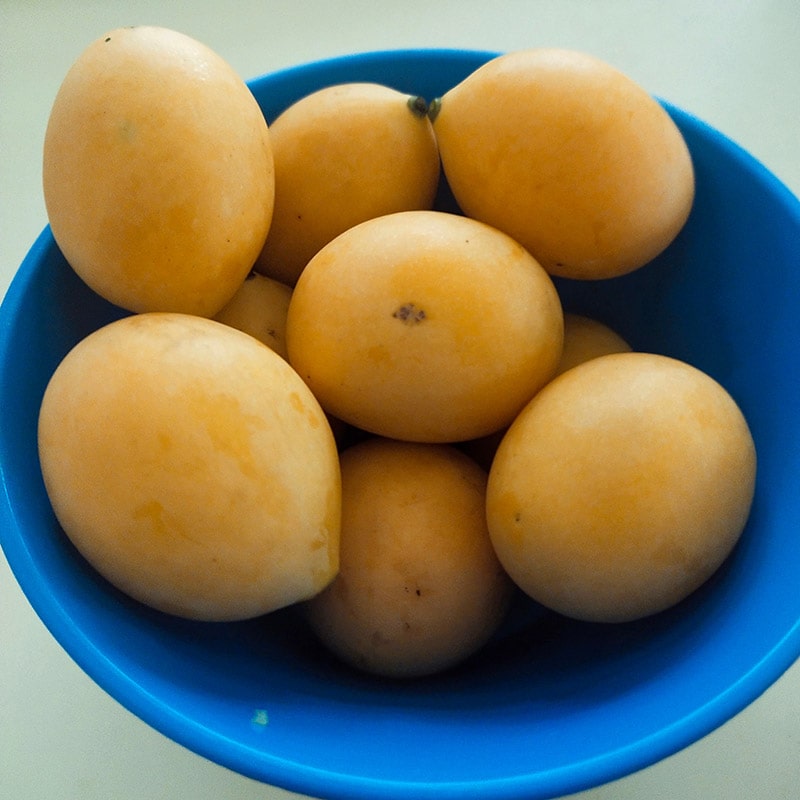
Kundang is a tropical fruit tree native to Southeast Asia and is currently planted commercially in Malaysia, Thailand, and Indonesia. Kundang fruits are commonly known as the “Marian plum,” “gandaria,” or “plum mango” in English.
There are two types of Kundang fruits: sweet and sour. The sweet one has light yellow, and the sour one has darker yellow. Kundang’s taste is similar to mangoes’. The entire fruit, including its skin, is edible. They grow roughly 2 to 5 centimeters in diameter.
Kundang can be used in cooking soup, making a salad bowl, and jam. Since the fruit provides lots of vitamins, fiber, and protein, your cardiovascular health can be supported when eating Kundang. Some people use unripened fruits to make fruit dishes and pickles.
14. Kiwano
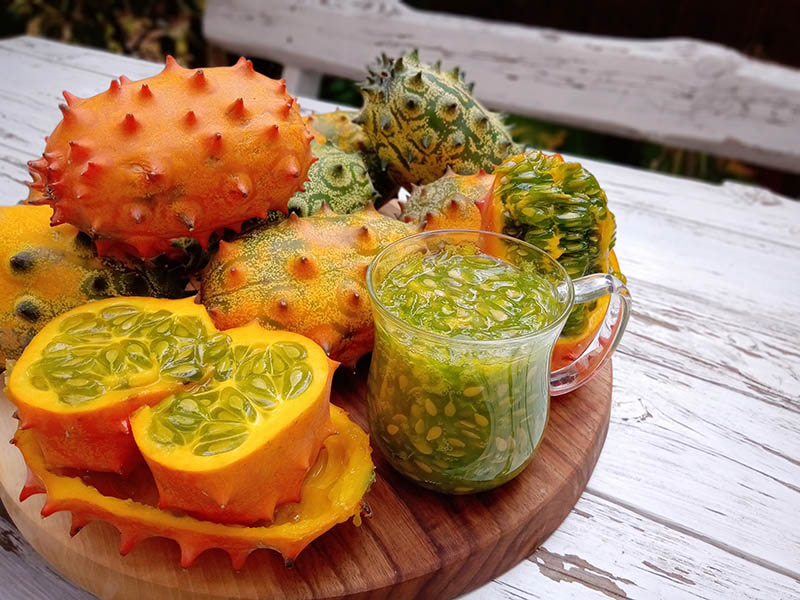
Kiwano, commonly called horned cucumber, is a traditional food in Africa. Kiwano is sometimes called ‘blowfish’ since it looks like a blowfish. Living in the deserts of Africa makes the fruit ‘transform’ from smooth cucumber to horned melon.
The ripe fruit has yellow skin and bright emerald green, jelly-like flesh. The fruit has an oval shape and is about 10 to 15 centimeters long. Inside, the meat contains high water content. Also, the fruit is super seedy. The flavor of kiwano melon is mild and slightly sweet.
Many people suggest that this blowfish melon can even boost heart health, reduce muscle soreness, and decrease inflammation. The primary antioxidants in kiwano melon are vitamin C, vitamin A, zinc, and lutein. Together, these nutrients play a role in preventing chronic diseases.
15. Kwai Muk Fruit
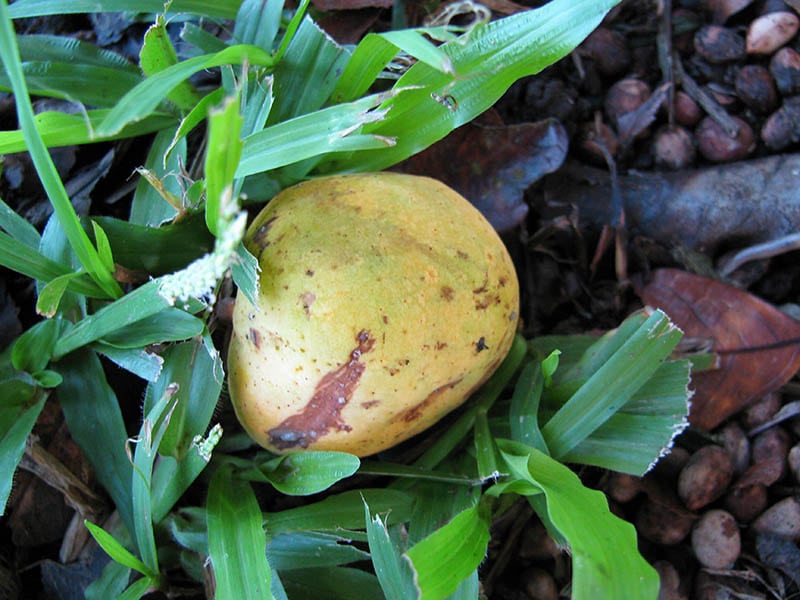
Kwai muk is nutrients-packed fruit supporting most of the human body.
Kwai muk fruit was originally planted experimentally in Florida. Later, it was recognized as native to China. A mature kwai muk tree can yield up to 2000 small fruits. The fruit ripens from August to October.
Kwai Muk Fruit has an unusual shape, somehow like an orange stone. The fruit has a yellow appearance at its ripeness, but it’s orange-red or red inside. Ripe fruit has an excellent flavor and is eaten fresh. If you want to store kwai muk fruit, preserve it with sugar syrup or salt.
Kwai muk fruit is a nutrient-packed fruit supporting almost all functions of the human body. The fruit maintains healthy cholesterol levels and an active heart. You can use the kwai muk fruit to make desserts and baked goods to receive these health benefits.
Discover Colorful K-Fruits That You Should Taste
Apart from these fruits above, I still have more fruits that start with K for you to discover. So do not go anywhere as you may want to try some of these fruits below.
16. Karonda Fruit
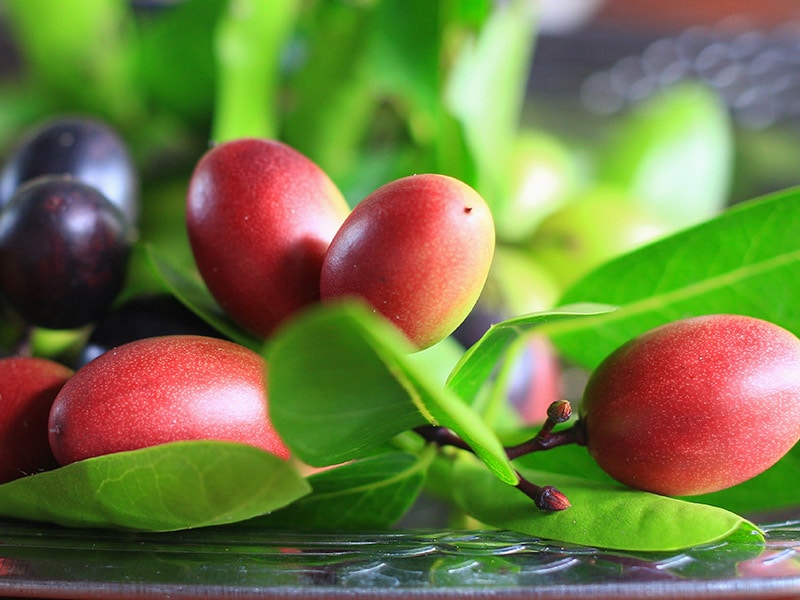
Karonda is one of many berry-like fruits believed to originate near the Himalayas, though some botanists place the fruit’s origin in Java. Fruit harvest is from August through October. Some trees bloom and yield fruit sporadically year-round.
Karonda fruit has small berries in a variety of colors. The fruit has an oval or ovoid shape and is small in size. Karonda fruits have a subtly sweet, herbal taste with prominently sour, bitter, and tart notes. Three to ten fruits grow into a cluster, making the shrub a multi-colored appearance.
Karonda fruit is rich in iron, and a good source of vitamin C. Karonda fruit can promote digestive processes and enhance brain activity. Koranda fruit can be made into jams and consumed as drinks. In India, Karonda is used to make spicy pickles.
17. Kumquat Fruit
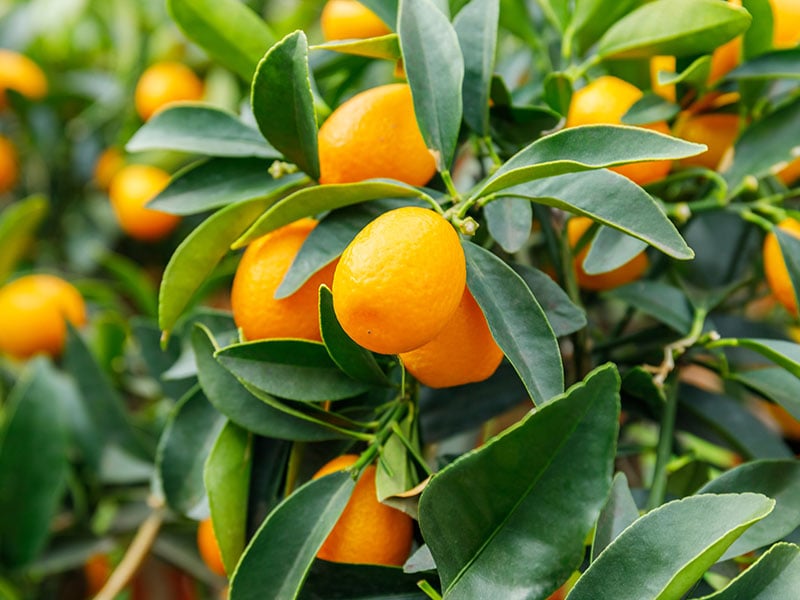
The kumquat plant comes from Southern China. Kumquat season is from October to June, but they are better from December to April. The tree can be grown just as quickly indoors as they can outdoors. If you want to plant kumquat fruit, you can grow them from seeds or cuttings.
The kumquat fruit is about 2.5 cm in diameter. The kumquat is an edible and orange-like fruit but a bit smaller. Some varieties are oval or oblong. They have acid, juicy pulp, and sweet edible skin. Still, the most exciting part of the kumquat is its sweet and delicious orange peel outside.
Besides eating kumquat flesh, you can use the well-known orange fruits for several purposes. Kumquat is often used in making cakes, desserts, or salads. Eating kumquats also help to prevent cold, cough, or other inflammation of the respiratory tract.
Expand your knowledge with 13 insane benefits of kumquats!
18. Kawakawa
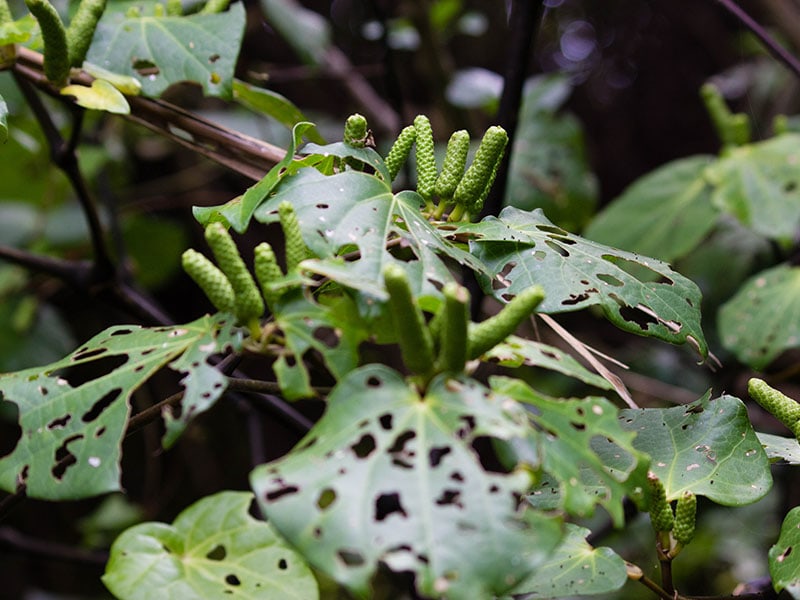
Kawakawa is mainly found around some regions of New Zealand. The fruit belongs to the same family as black pepper. The harvesting season falls from January to March.
The kawakawa tree can grow to about 6 meters high. Both the male and female kawakawa produce flowers; however, only the female ones give fleshy berry-like fruits. The sweet pulp tastes like passion fruits while the seeds rather like black pepper.
You can use kawakawa fruits in different ways. One ideal way is to make a salad bowl with pickled kawakawa, enhancing the dish’s taste. Another use of kawakawa is to make them into tea. Kawakawa is believed to improve your kidneys’ functions and help with stomach problems.
19. Keitt Mango
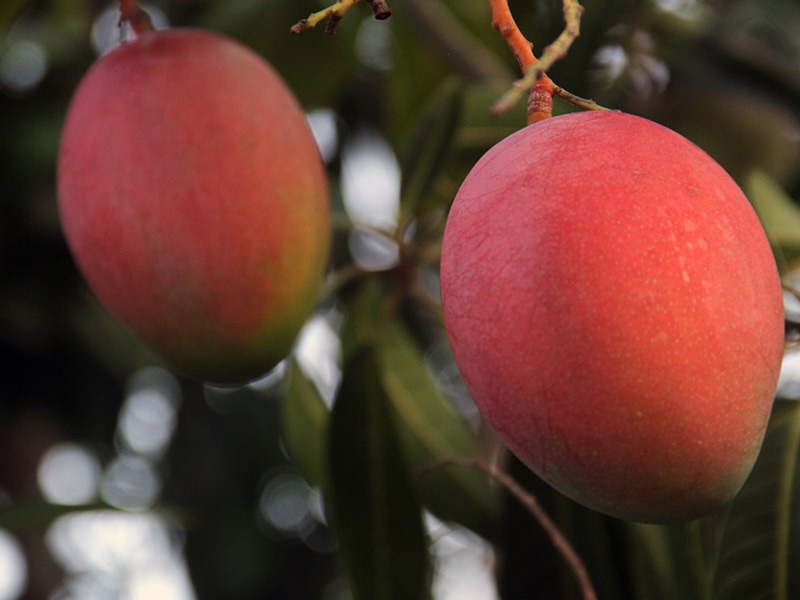
Keitt mango originated in Florida and is grown commercially in many mango exporting countries. The harvesting peak is from July to September. Keitt is one of the world’s greatest mangoes, available in most sub-tropical regions.
Unlike other green mangoes, green Keitt mangoes have a naturally sweet and tart taste. The fruit is comparatively large, reaching up to several pounds in weight. The colors of Keitt Mango are super colorful: green, pink, orange to yellow, making it look mouth-watering.
This type of mango is best eaten fresh or pureed for smoothies. Mangoes contain lots of protective compounds with antioxidants. Therefore, eating Keitt mango fruits helps you have healthy skin and hair. Also, nutrients in the mangoes support your heart health.
Do you want to know more about Keitt mangoes?
20. Korlan Fruit
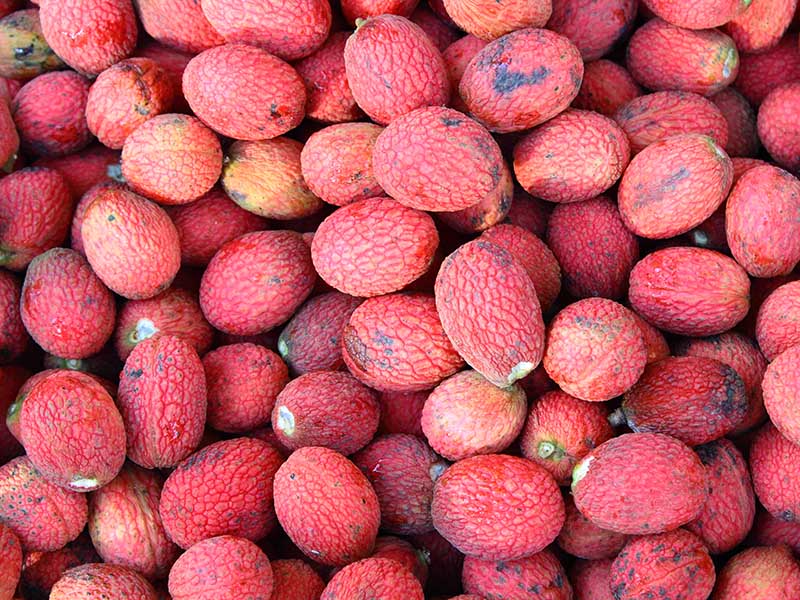
Korlan fruit has a medical name called Nephelium hypoleucum. The fruit is originally from Southeast Asian countries like Vietnam, Malaysia, Indonesia, etc. Therefore it carries lots of tropical fruit features and characteristics.
Just looking outside Korlan fruits, you would be confused with lychees. The fruit has red and rather rough skin. Korlan fruit taste has a unique taste of sour and sweet. The pulp is thick and looks like rambutan when being peeled.
There are some expected health benefits when you eat korlan fruits. Firstly, it is said that korlan fruits help your body regulate blood sugar. Besides, for people with attention deficit hyperactivity disorder (ADHD), eating korlan fruit can further improve concentration and reduce stress.
21. Kowai
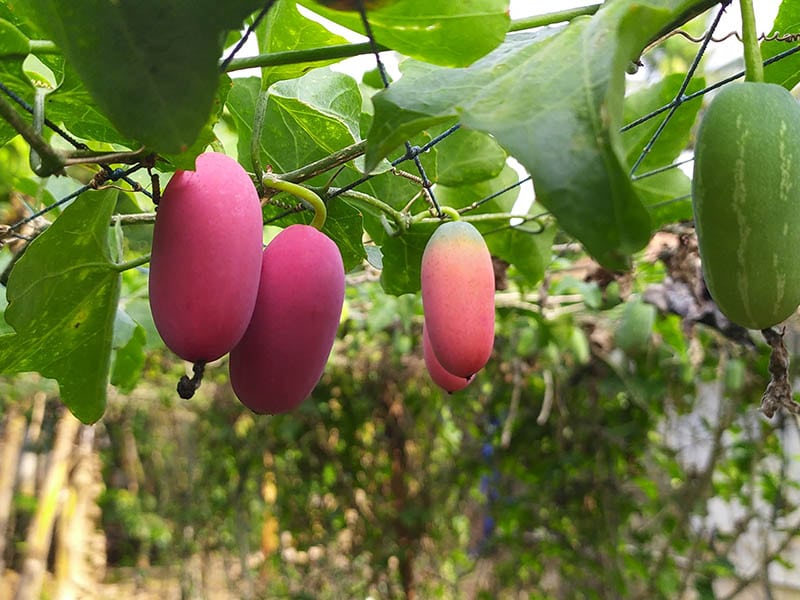
Kowai fruit originates in East Africa, and now it is planted in some countries such as Australia, the Caribbean, Southern USA, and the Pacific region. The fruits somehow favor tropical climates over other climates.
Kowai has an oval shape and pretty smooth skin. Kowai is preferable when being cooked. When ripe, kowai has a beautiful red color. Many people think of bitter melons or small cucumbers when looking at this fruit.
Some Kowai lovers say the fruit can treat common health conditions. Kowai fruits are rich in beta-carotene, an organic pigment reducing precancerous stomach lesions. Also, these fruits are believed to prevent diabetes and obesity.
22. Kahikatea Fruit
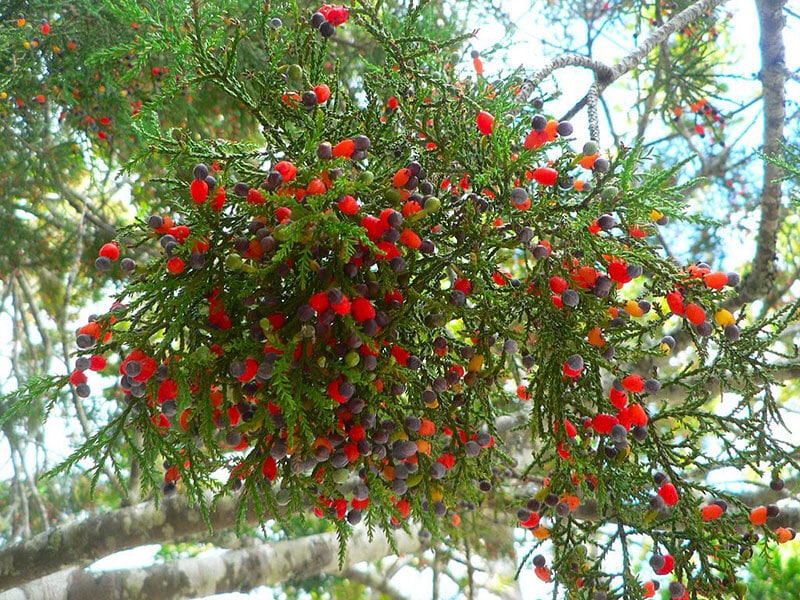
The Kahikatea fruit has two parts: orange-red berry-like fruit and purple-dark seed.
Kahikatea is New Zealand’s tallest native tree. This tree is most commonly found in wet lowland forests. The fruit, growing on the evergreen tree, has a bronze color and is used to cure many critical health conditions.
Kahikatea fruits look like small berries. The fruit has two parts: orange-red berry-like fruit and purple-dark seed. There is little information about how it tastes, but some people describe it as “sweet but without a flavor.”
Kahikatea fruit is beneficial to human health. These fruits are also used to make spruce beer. Birds, especially pigeons, are especially fond of these berries.
Looking at a bunch of kahikatea fruits, do you want to try them?
Widen Your Choices For Fruits That Begin With K
Do not hesitate with new and rare fruits that I suggest from the article. Some of these fruits may have a distinctive look or unusual taste, but who knows, there may be some fruits that sooner or later become your favorites.
And wait! Please share your thoughts and ideas with our beloved readers if you know of any fruits beginning with K that I am not yet to mention. I am waiting to hear from you.
If you find this list helpful, please spread the information to your beloved people who may need it. And how many fruits that start with K do you want to add? Let me know in the comment section.
